AI at Work
AI Brand Management: How to Maintain Brand Consistency With AI Image Generators

Neelam Goswami · Content Marketing Associate
November 26th, 2025 · 13 min read

Marketers have always understood the power of visual branding — just consider how Nike's swoosh and dynamic athlete imagery inspire millions to push their limits, or how Apple's clean, minimalist aesthetic has cultivated a sense of elegant simplicity that customers instantly recognize and trust worldwide. Brand recall was found to be the biggest driver (38.7%) of brand lift in emerging media, more than even baseline brand awareness, according to a Nielsen report of 2023.
And what could drive brand recall more than having a consistent and memorable brand visual identity? However, maintaining this level of visual excellence across hundreds of touchpoints today is more crucial — and challenging — than ever before. It means that each piece of content — from social media posts to email campaigns, sales presentations to website banners — must reflect and reinforce the brand's visual identity while remaining fresh and engaging.
If achieving this manually seems like a lot of work, AI image generators can accelerate your entire visual content creation workflow.
Key Takeaways
Key Takeaways
Brand identity is more than a logo: It’s about a unified visual language (colors, typography, imagery style, design patterns) that conveys your brand’s values and personality. Consistent visuals help build trust, signal maturity and reliability, and support premium positioning.
AI can make brand-aligned image creation fast and scalable: AI image generators let teams crank out consistent visuals across formats and channels, from social media to product photography, saving weeks of manual design work.
Smart “brand training” is the secret sauce: By training the AI with a curated set of brand-style images (colors, lighting, textures, composition), you get outputs that naturally match your established visual identity — without manually forcing every detail.
Advanced AI features preserve quality and polish: With things like product preservation and image harmonization, AI-generated visuals can reach near-professional-photography quality. That means AI helps you maintain high aesthetic standards, rather than only helping with scale.
A centralized, scalable design system + governance makes growth manageable: Using a shared “brand hub” or “brand kit” (like those in Typeface) with approved templates, image styles, and governance logic helps teams — global or remote — stay aligned and produce on-brand content rapidly, even across markets and languages.
Human strategy still matters (AI is a tool, not a magic bullet): Success depends on clearly defined brand values and audience understanding, plus ongoing oversight. AI should power execution — but brand direction, storytelling, and quality control remain human-led.
What is brand visual identity?
Brand visual identity is the thoughtful collection of visual elements that bring a brand's values and personality to life. More than just a logo, it includes colors, typography, imagery style, and design patterns that work together to create instant recognition.
In today's expanding digital landscape, strong visual identity has become essential for communicating complex messages clearly across diverse business audiences and cultural contexts. Leading brands maintain visual consistency while adapting to different platforms and audience needs, creating a recognizable experience whether on social media, websites, or emerging digital spaces.
The importance of visual identity in branding
A cohesive brand visual identity is crucial for standing out and making a lasting impression. Here are some key benefits of maintaining strong visual branding.
Trust and market leadership signaling: A unified visual identity across all platforms implies stability, reliability, and maturity for stakeholders.
Employee alignment and operations: A strong visual identity system streamlines internal operations by providing clear guidelines and standards. This enables global workforces to efficiently create on-brand materials without constant oversight from central marketing teams, reducing bottlenecks and improving productivity across the organization. This can be further reinforced by using a marketing AI platform like Typeface's Brand Hub, which creates a unified, dynamic system that learns and remembers everything about your brand identity. This ensures consistency across every team member, regional department, and agency partner while enabling personalization at scale.
Value perception and premium positioning: Consistent, high-quality visual branding can help your brand be perceived as high-value or premium by target customers.
Cultural and market adaptability: A well-defined visual identity system provides the flexibility you need for global market adaptation while maintaining brand recognition. It allows for geo-culturally relevant content creation across diverse markets while ensuring the brand remains instantly recognizable worldwide.
The role of AI in modern brand management
Modern AI platforms have evolved to become context-aware systems that understand the nuances of your brand identity. These intelligent solutions understand how to apply your visual guidelines and how to adapt elements based on communication goals, audience needs, and channel requirements.
Typeface exemplifies this evolution as a platform designed specifically for brand-conscious content creation. With Brand Hub, it transforms your static guidelines into a dynamic, evolving Brand Kit that can be used to ideate and create content variations personalized to your brand and audiences. Our Brand Agent then serves as your always-on brand guardian to ensure all content is on-brand.
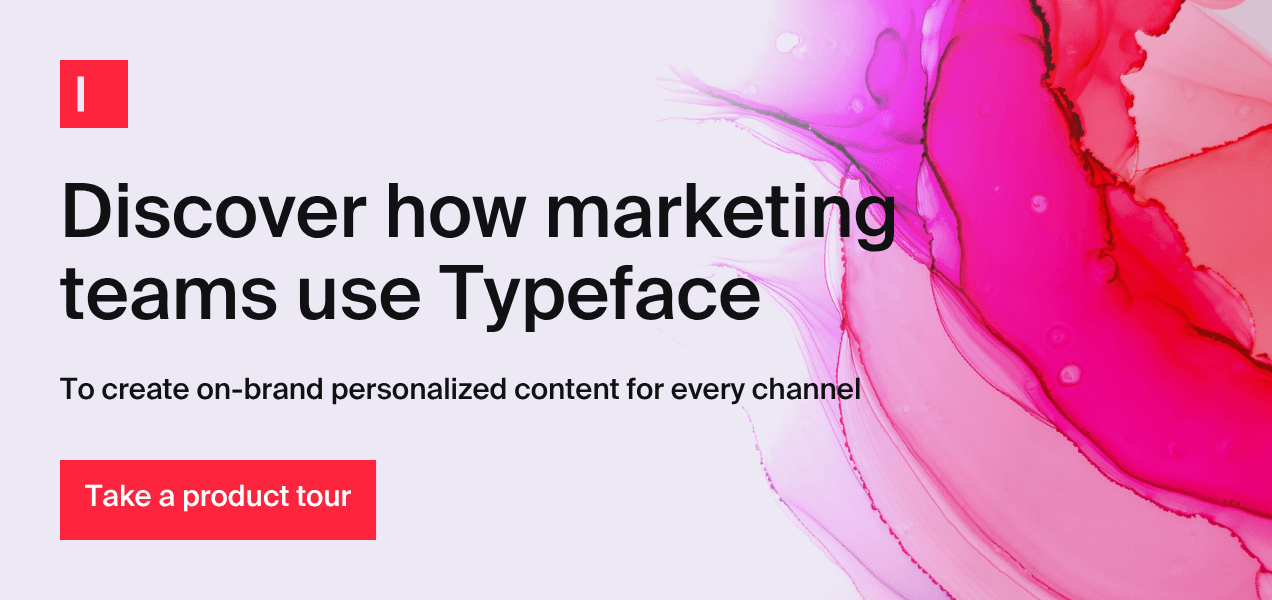
How AI image generators help enhance brand visual identity
1. AI platforms streamline visual content creation
AI platforms can generate on-brand visuals and adapt existing content for different platforms. This allows enterprise teams to scale their visual content production without compromising brand integrity while freeing creative professionals to focus on higher-value strategic work and innovation.
To make it even simpler to get started, Typeface's AI Visual Inspiration Studio gives you a vast library of preset images across different products, styles, and scenes that you can customize with your own product assets, streamlining the AI product photography process.
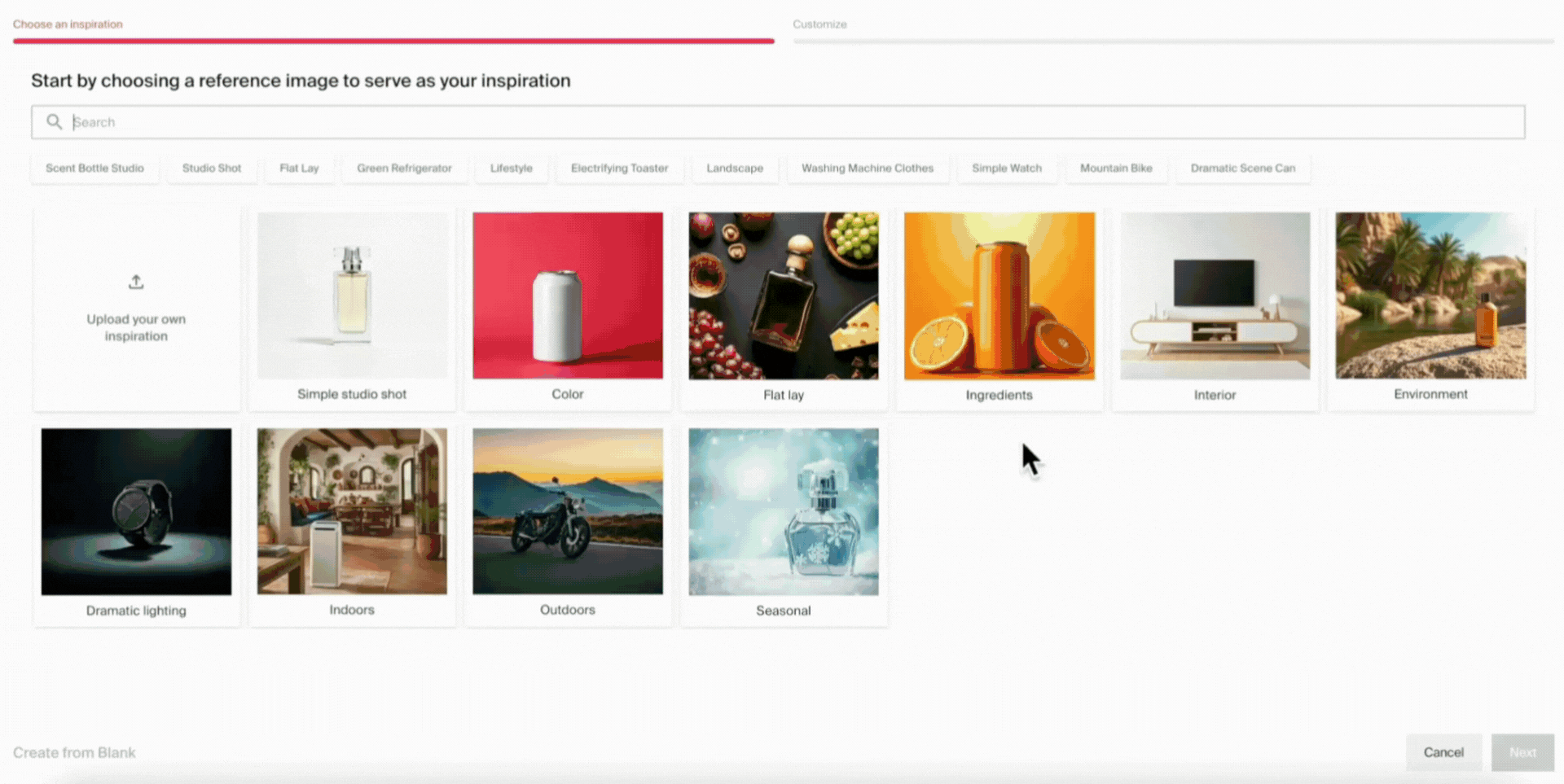
If you are feeling a little more creative and want to generate product images with your own decorations, props, and layouts, you have the flexibility to do that too. Our Image Studio lets you position your product assets and decorations in your desired layout. Then, add a simple prompt describing the image. The Magic Prompt feature on Typeface will enhance your AI image prompt with the right modifiers for a better-quality output.
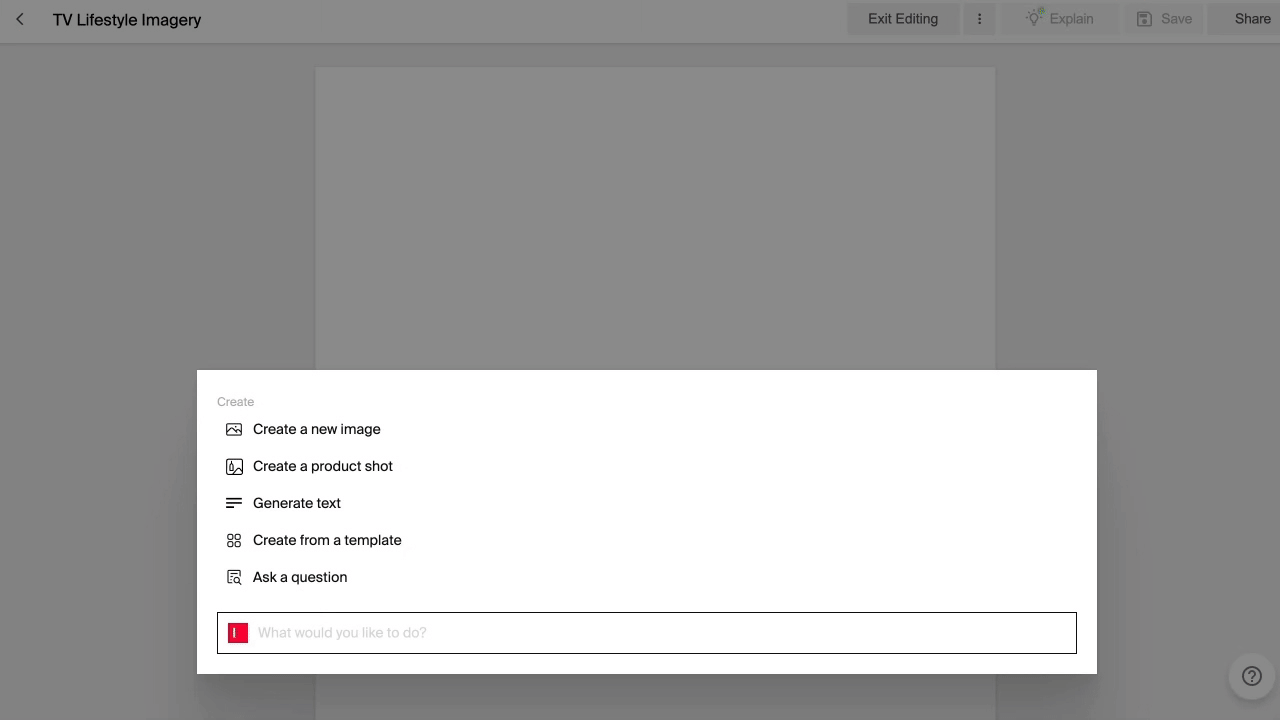
2. Personalized Brand Hub with image style training
A powerful feature of Typeface’s platform is the Brand Hub, which transforms your brand guidelines into intelligent Brand Kits. Unlike traditional style guides, these dynamic Brand Kits centralize all visual identity elements—from fonts and color palettes to logos and design patterns—into a living system that learns and adapts. This ensures brand consistency while enabling personalized content creation across global teams, regional departments, and agency partners.
You can also train AI models to learn your specific visual styles and preferences. This means that new visuals can be generated in line with previous designs, taking into account your unique textures, colors, and photography styles.
On Typeface, you can save these core brand values and styles under Brand Kits. Under a brand kit, you can train and save multiple image styles to use in AI generations, save your brand's color palettes, logos, fonts, as well as text style guides.
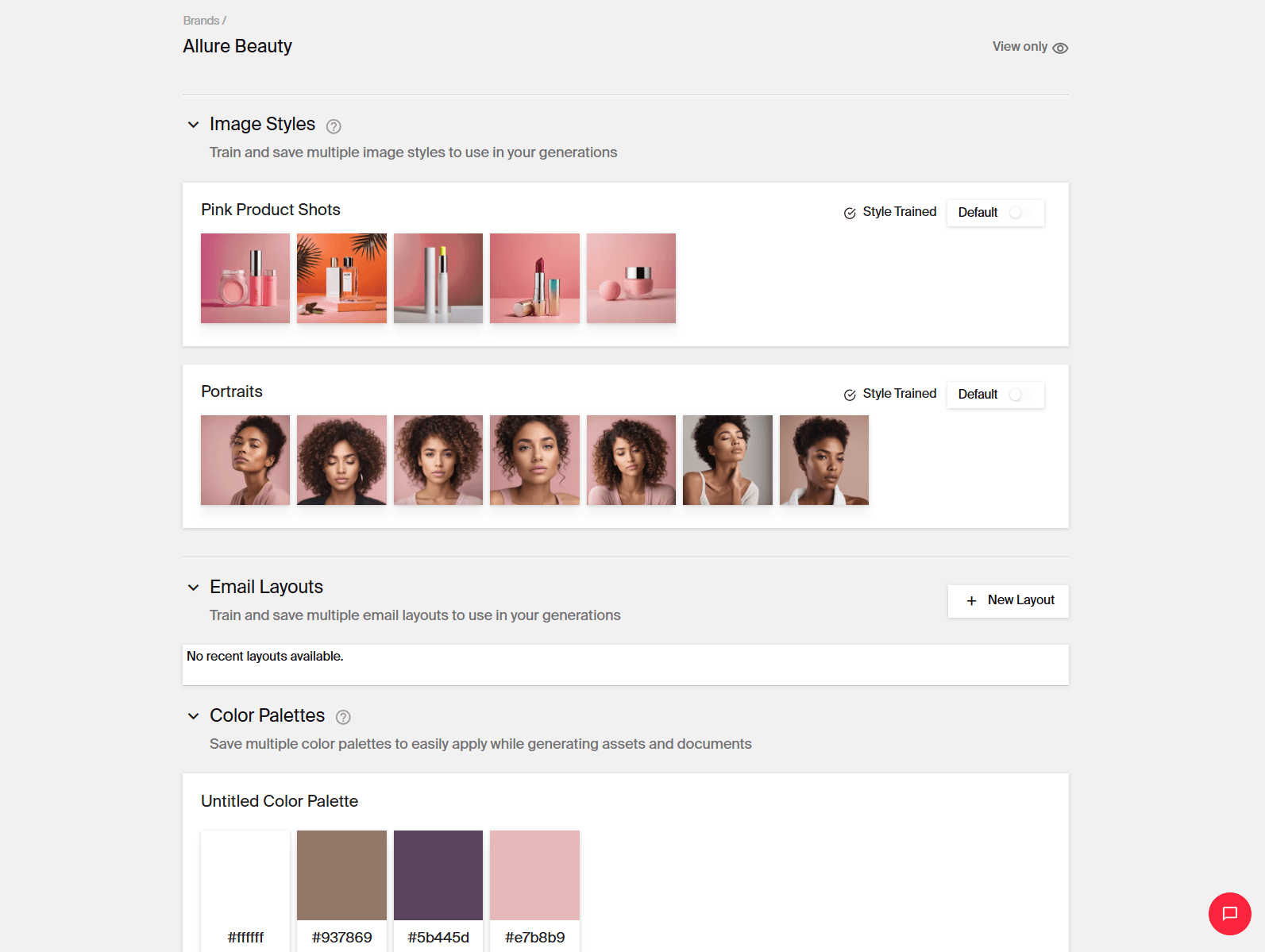
By training the AI with your brand’s image styles, you can ensure that all your marketing visuals across social media, emails, ads, and other channels have a cohesive visual identity, without the need for any complex prompt engineering.
Here’s an example of a food photography style, with bright food images on a dark background, we used to train our AI.

Image style the AI was trained on
When asked to generate images of sourdough bread, without image styles, the AI image generator gave us outputs of all kinds, unsure of what we’re looking for.

Output without image style
However, once trained with the image style above, the AI returned a much more coherent series of images that looked realistic and on-brand.

Output with image style
4. Product preservation and image harmonization
A common concern among marketing leaders and creative directors is whether AI-generated content can meet enterprise quality standards. This is a critical consideration, as the quality of visual assets directly impacts brand equity and market perception. However, AI image generation tools have come a long way and are now capable of photorealistic rendering that matches professional quality output.
Advanced AI capabilities like product preservation and Image Harmonization on Typeface deliver significant value through product training. By training the AI with your product images, you can ensure precise preservation of product details and authentic environmental integration by adapting lighting, reflections, transparency, and other attributes to the scene to generate images with a seamless composition.
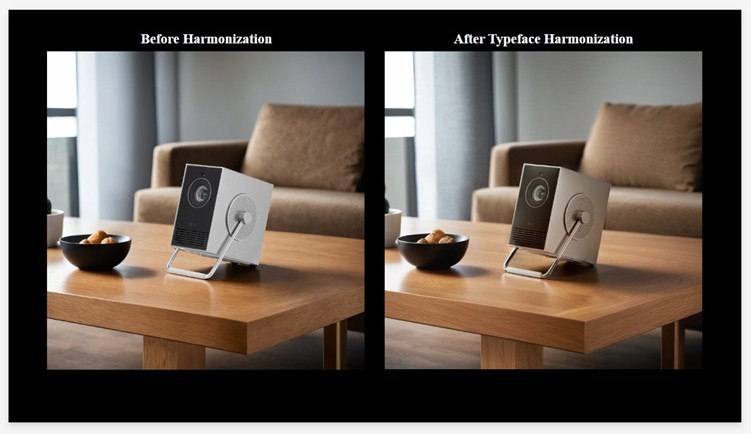
This means your AI-generated product shots do not look like they were superimposed onto a background but appear to be shot professionally in a studio or on location.
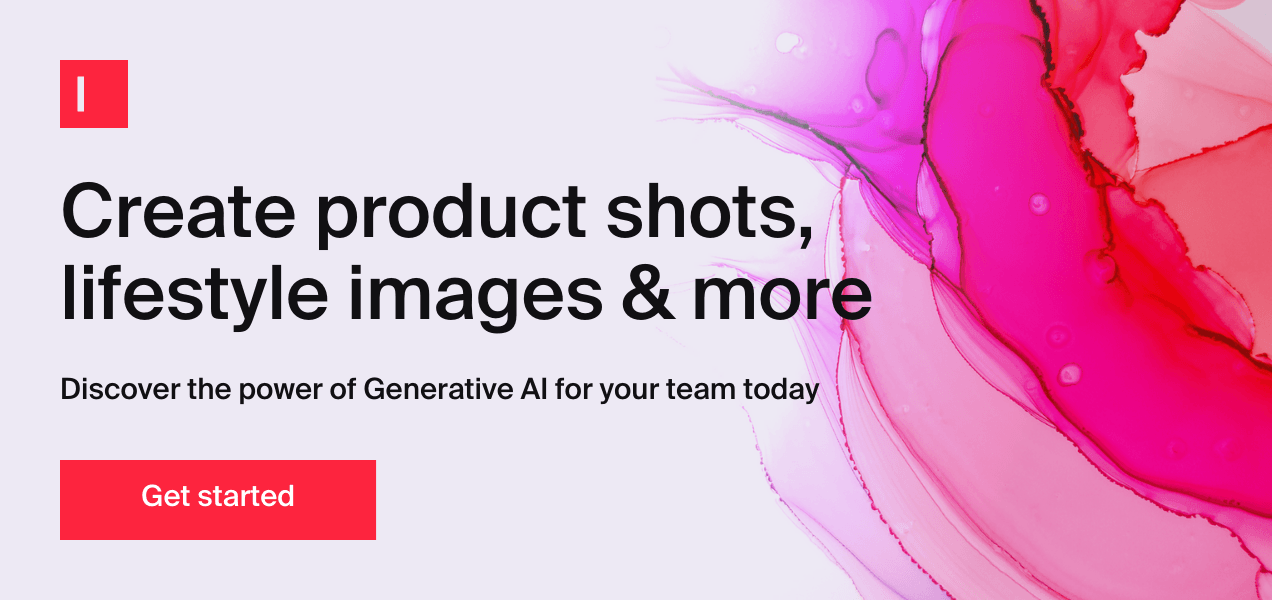
5. Reuse and adapt design templates for various channels
As businesses expand, marketing teams face increasing pressure to deliver high volumes of visual content across multiple channels and markets. The solution to this lies in strategic content multiplication – reusing approved assets and templates to efficiently scale production without compromising quality or brand standards.
Having a centralized template system enables regional teams to access and customize pre-approved designs for local markets. It also facilitates rapid adaptation of existing assets for different channels, while maintaining consistent brand representation across all touchpoints.
By using pre-approved design templates, you can also shorten approval cycles and ensure efficient resource allocation by eliminating redundant content creation.
Typeface lets you import your pre-approved assets and templates making them accessible centrally to your broader team. With Ad Agent, adapt any approved design or asset for various markets, channels and audiences. Whether you need to recreate an ad campaign for various markets globally or personalize it for different audience segments while retaining the core design and messaging, Ad Agent can accelerate campaign deployment by leveraging your approved content library – including headlines, translations, images, and brand assets – to automatically generate multiple campaign versions.
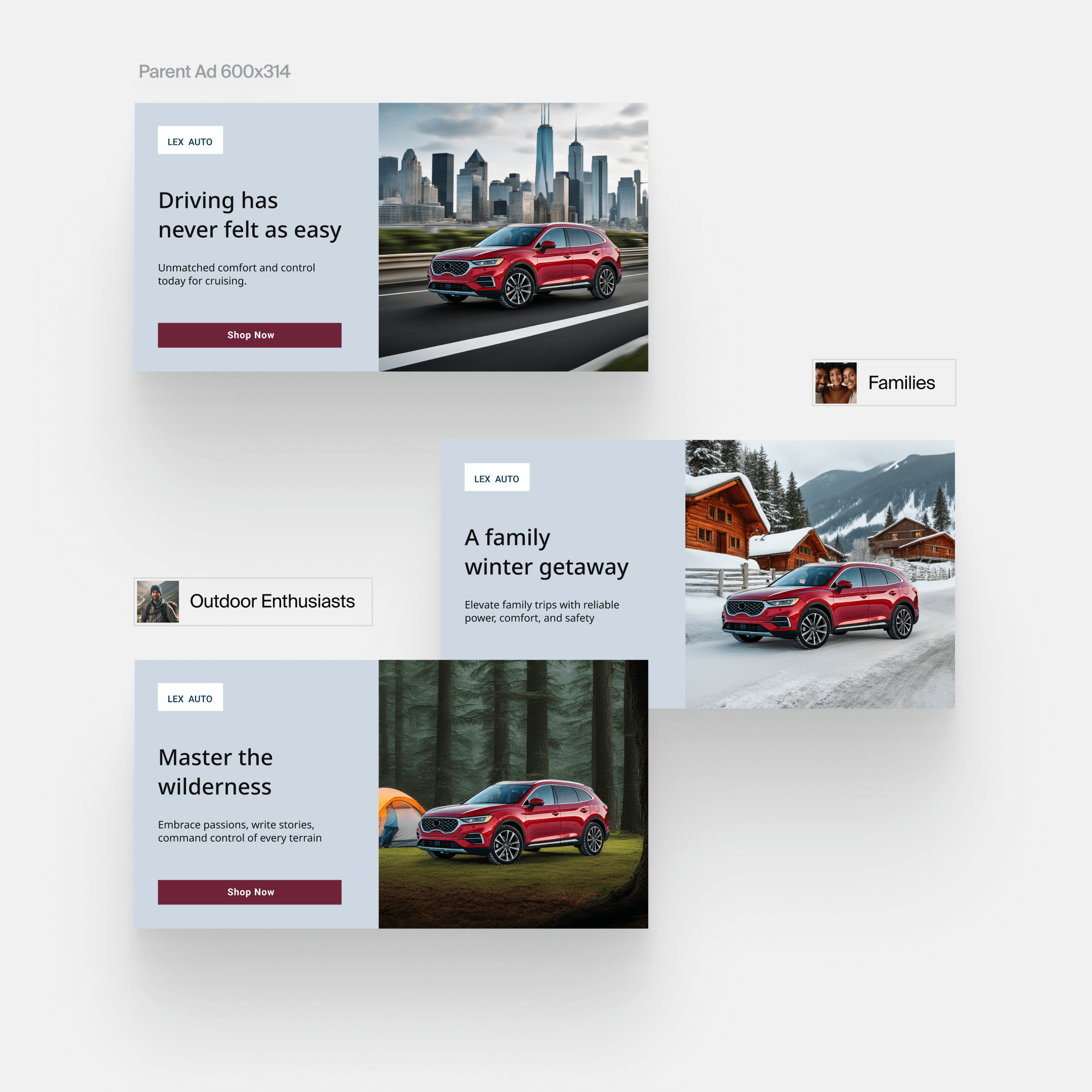
6. Brand Agent for brand governance
AI systems are evolving into sophisticated business agents that can autonomously evaluate and guide brand decisions. In enterprise brand management, Typeface's Brand Agent serves as an intelligent guardian of your visual identity - automatically analyzing content across all channels to ensure compliance with established guidelines. It doesn't just flag inconsistencies but proactively suggests corrections and ensures whether visual content and marketing materials align with established brand standards.
Some of the ways Brand Agents can help marketing teams:
Validate brand consistency across thousands of visual assets and text
Flag potential brand compliance issues before publication
Streamlines collaboration between teams and agency partners
Best practices to create a strong brand visual identity
AI image generators excel at rapid visual production, but success depends on integrating them into a strategic framework where human vision guides AI capabilities. Here are some best practices to follow for building your brand's visual identity.
Define core brand values and personality
To start creating a visual identity that resonates, it's imperative to have a clear understanding of your brand's core values and personality. These elements will guide the visual style and elements you choose, ensuring everything from your logo to the color palette reflects what your brand stands for.
Understand audience preferences
Knowing your target audience is equally important when designing your brand's visual identity. Understanding audience preferences helps you create visuals that resonate on a deeper, more emotional level. With an AI content creation platform, you can use this audience data to tailor images and messages that cater to their tastes and expectations.
Audience preferences also guide and refine your visual content strategy to create content that is most likely to engage your desired demographic, whether they’re vibrant and bold or sleek and subtle.
Engage in visual storytelling that reflects your brand personality
Storytelling is a powerful way to make emotional connections with your audience. When implemented strategically, visual narratives communicate complex brand propositions without relying on excessive text or explanation. With AI image generation tools, visual storytelling with on-brand creatives has become a lot easier and significantly cheaper. Today, brands can create photorealistic marketing assets in any setting they want, without the need for professional photography or location shoots.
Build a scalable design system
A scalable design system serves as the operational foundation for enterprise brand management. It should serve as a visual branding playbook that includes not just modular design components that work across platforms, but also content guidelines and messaging frameworks that work together seamlessly. A templatized design system should empower teams to quickly create variations for social posts, email campaigns, landing pages, and other marketing materials without starting from scratch, enabling them to focus on storytelling rather than technical specifications.
Future-proof your brand visual identity
As consumer preferences shift and new trends emerge, maintaining a visual identity that is both timeless and adaptable ensures your brand remains relevant and competitive. Create guidelines that accommodate shifting market preferences while maintaining brand recognition. Establish a framework for testing new visual approaches within brand parameters. AI-powered tools can help in maintaining brand consistency across expanding channels, so make sure to keep your technical infrastructure up to date.
Frequently asked questions
How do I know if my brand is ready for AI image generation?
Your brand is ready if you have established brand guidelines including color palettes, typography, logo variations, and preferred visual styles. You'll also need a clear understanding of your brand values and target audience preferences. If your current visual identity is inconsistent or undefined, consider solidifying these elements first.�
How much time can AI image generation actually save our marketing team?
AI can reduce visual content creation from weeks of photoshoots and design iterations to a matter of hours. Teams can now create and test hundreds of on-brand visuals across markets, products, and campaigns while maintaining brand standards.
How do I ensure AI-generated images look professional and not obviously AI-created?
Typeface offers features like product preservation and image harmonization that create photorealistic rendering matching professional quality. The key is training the AI with high-quality brand examples and using these tools that offer sophisticated rendering capabilities.
How can I maintain brand consistency when multiple team members are using AI tools?
Typeface lets you create centralized Brand Hub system where all visual identity elements are stored and accessible to global teams. The Brand Agent on the platform automatically applies your brand rules, analyzes content to ensure compliance with established guidelines and flags potential issues before publication.
How do I adapt our brand for different markets while maintaining consistency?
Use a scalable design system with pre-approved templates that can be customized for local markets. AI can help you adapt existing assets for different channels and audiences while maintaining core brand recognition elements.
What's the best way to test AI-generated content before full implementation?
Start with small-scale testing across different channels and audience segments. Use A/B testing to compare AI-generated content with traditionally created content, and gradually scale based on performance data and brand consistency metrics.
How often should we update our AI brand training?
Regularly review and update your brand training as your visual identity evolves, new products launch, or market preferences shift. The dynamic nature of AI Brand Kits means they can adapt and learn continuously from new examples and feedback.
Want to leverage the power of AI to scale your visual presence while maintaining high quality standards? Get a demo of Typeface today and witness the transformative impact of AI image generation on your creative process.
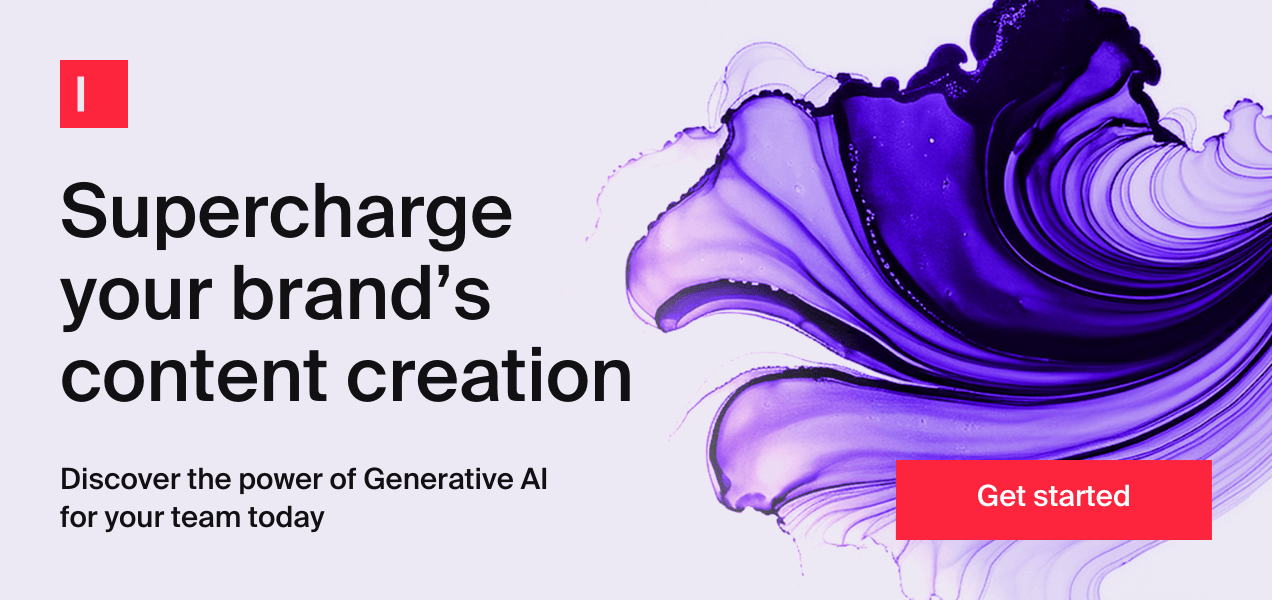
Share
Related articles

AI at Work
50+ AI Image Prompts That Actually Work for Marketing Campaigns

Akshita Sharma · Content Marketing Associate
November 6th, 2025 · 29 min read

AI at Work
AI-Powered Content Localization: How Enterprise Brands Scale Content Marketing Without Sacrificing Local Relevance

Neelam Goswami · Content Marketing Associate
December 3rd, 2024 · 13 min read

AI at Work
Generative AI in Retail: Creating On-Brand Social Ads

Ashwini Pai · Senior Copywriter
July 2nd, 2025 · 12 min read